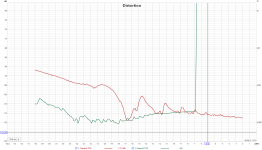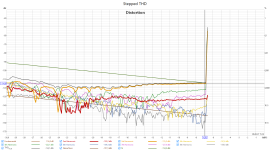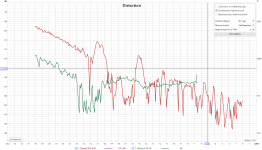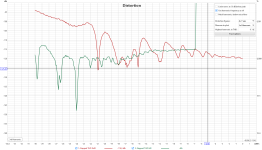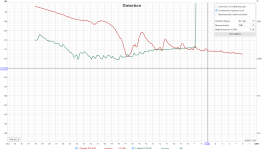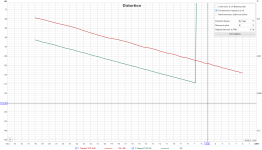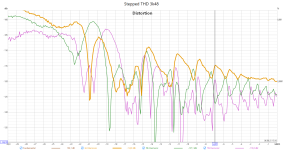no problem, but I posted the code already, right?@IVX,
Ivan, will you be able to share the test recording and matlab script? I'd like to try and see if there is a way to make an algorithm which can run on PIC32 USB transport.
Which record do you need? Music signal or something else? Actually, you can make your own test signal with Audacity, Cosmos ADC is too good and behaves like sinth signal with almost no noise. If you gonna use cheap cascaded ADCs, it would be better to refine my code accordingly.
yeah, as a picture 😀no problem, but I posted the code already, right?
One you load in your script.Which record do you need?
I have the Cosmos ADC but since there is a recording done by you, it would save me some time assembling the setup and making the recording.Actually, you can make your own test signal with Audacity, Cosmos ADC is too good and behaves like sinth signal with almost no noise. If you gonna use cheap cascaded ADCs, it would be better to refine my code accordingly.
I prepared Stitcher.exe(800kB with all dll) to stitch Lch/Rch according to my MATLAB code. Actually, Gemini helped a lot. AI turned MATLAB to C++ with zero errors in 5 seconds. Name the wav file as rec.wav, double click on Stitcher.exe, and in the same folder, the result.wav appears.
https://drive.google.com/file/d/1RBiItm3f0OWZB7dyniESCBpX8NvArA16/view?usp=sharing
https://drive.google.com/file/d/1RBiItm3f0OWZB7dyniESCBpX8NvArA16/view?usp=sharing
The two level record/reproduce is far from new. 3M did in in the 1960's: https://richardhess.com/notes/formats/magnetic-media/magnetic-tapes/analog-audio/3m-dynatrack/ All analog.
I'm not sure what the real world utility is since I know of no transducers with a usable dynamic range much above 130 dB. not that its achevable outside a laboratory. And of course whos ears have that dynamic range?
I'm not sure what the real world utility is since I know of no transducers with a usable dynamic range much above 130 dB. not that its achevable outside a laboratory. And of course whos ears have that dynamic range?
This is only one side of the story that most people seem to be focused on.of no transducers with a usable dynamic range much above 130 dB.
Dynamic range and SNR also tells us something about the noise coming out of a DAC.
This noise is further amplified by the pre-amp and power amplifier.
Depending on the sensitivity of the drivers as well as background noise of the environment, this can be audible.
I've worked on big line-array systems in the past.
I can tell from experience that with like 24 high sensitive compression drivers, things matter a lot more than you might think.
Maybe not as high as a SNR of about 130dB, but there isn't anything wrong with a bit of headroom.
There are also use cases where companies use compression drivers + waveguide for studio monitors in VERY quite environments while sitting relatively close to the speakers.
Maybe this is different then most people need on average.
But that doesn't mean there aren't use cases for it.
I personally see the Cosmos devices more as measuring equipment.
In that case some additional performance is always nice to have.
Not only for confidence, but also just to make sure you're not affecting the results. (again headroom)
Sometimes we forget the trancients. A balloon popping is 157dBs.
So a combination of a low broadband signal and high trancient signal requires high dynamic range
Wind in leaves + hit a metal plate
When it is recorded noisefree it is compressed for reproduction
So a combination of a low broadband signal and high trancient signal requires high dynamic range
Wind in leaves + hit a metal plate
When it is recorded noisefree it is compressed for reproduction
The dynamic range is good to have in the electronics but the 130 dB range is that of a B&K 4145 microphone capsule under ideal conditions. Most microphones are worse. Either higher peak with much higher noise floor or lower self noise and then electronics clip much earlier. Also a limitation of speakers, high spl drivers mechanical parts have a lower limit to motion from internal friction.
This discussion of a patent on the concept addresses it more thoroughly https://www.eevblog.com/forum/metrology/patent-us9590648b2-28-bits-enob-dac-gt-168-db-snr/
This discussion of a patent on the concept addresses it more thoroughly https://www.eevblog.com/forum/metrology/patent-us9590648b2-28-bits-enob-dac-gt-168-db-snr/
- Home
- Vendor's Bazaar
- Cosmos APU a notch+LNA $70 to outperform APx555b for $30,000
